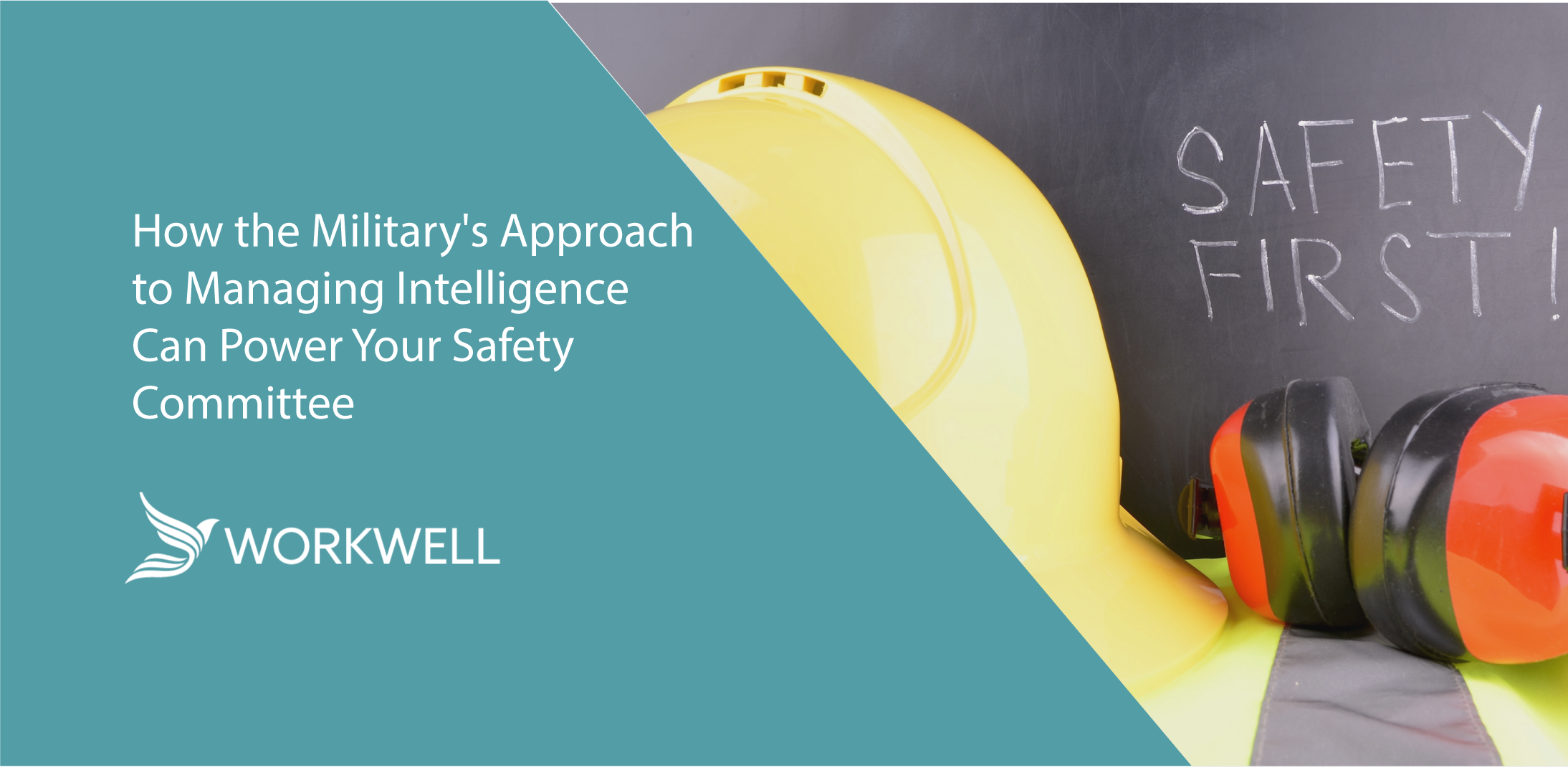Prevent It


How the Military's Approach to Managing Intelligence Can Power Your Safety Committee
In our work, we have seen quite a few great safety programs. However, sometimes they are stalled due to unforeseen circumstances, new data, or even a change in management. This post is the first in a series that will give you specific actions you can take to operationalize your safety programs. First, we tackle making sense of the abundance of data available to you.
Organizations often establish Safety Committees to identify workplace safety hazards, conduct safety training classes, and develop recommendations to prevent accidents and enhance employee wellbeing.
To further understand their organization's current safety status, the committees will typically perform a workplace risk assessment and collect data such as incidence rates, injury trends, and OSHA notifications. Using qualitative and quantitative information, the committee can objectively calculate the organization's workplace safety profile. The committee can augment these quantitative findings with employee surveys, ergonomic recommendations, and proposed risk control measures.
Adrift in a Sea of Data
However, committees can get bogged down trying to sort through and report on the massive amount of data collected. The challenge is to sort through all the data and determine what is actionable and what is just background information.
If your committee is struggling to sort through the data morass, it's helpful to examine how one expert manages vast amounts of data and intelligence – the U.S. Department of Defense. They've developed a Military Intelligence framework that classifies data as either strategic, operational, or tactical to ensure the right intelligence reaches the appropriate audience in time.
The premise behind this approach is that each type of information serves a particular purpose, targets a different audience, and impacts decision-making at different levels. Strategic intelligence is appropriate for senior management responsible for long-term planning and execution. Operational intelligence can affect those making day-to-day decisions, and tactical intelligence is most useful for specialized workers responding to strategic directives.
- Strategic - Strategic information is forward-thinking and can impact an organization's future success, so senior executives use it to develop long-term business goals and investment plans. Sharing summarized injury rate reports with this audience, for example, may highlight the need to invest in onsite physical therapy services or budget for new safety equipment.
- Operational – Operational information pertains to the current situation and can impact daily operations, resource allocation, and work practices. Operational intelligence can highlight safety hazards or diagnose the causes of workplace injuries. For example, an increase in injury rates may reveal the need for ergonomic assessments in the warehouse.
- Tactical – Tactical information is present-day, granular, and used by specialists. While strategic information deals with the "what" and "why" part of an organization's long-term plans, tactical information relates to "how" those plans are accomplished. For example, in response to senior management's goal to decrease employee injury rates, Ergonomic Managers may perform a detailed worksite assessment to identify specific causes of worker injuries and recommend solutions.
Optimizing intelligence reporting at each level and directing it to the right audience can expand the effectiveness of the Safety Committee. As a result, organizations can significantly improve their decision-making and strengthen their safety culture.
Workwell's consultative approach to safety can help you sort through the data and turn it into actionable insights. To learn more, download the brochure below.
Select a topic
- View all topics
- WorkWell
- Safety Culture
- Onsite PT Clinics
- Ergonomics
- Injury/Illness Prevention
- Employee Wellness
- MSK
- Industry News
- POET
- Safety
- Managed Services
- Manufacturing
- Functional Job Descriptions
- Onsite PT
- FJD
- Post Offer Employment Training
- Provider Network
- Blog
- Events
- Featured
- OSHA
- Work Readiness
- Company News
- Job Coaching
- MSK Strategy
- Musculoskeletal
- PT Solutions Employee
- Presenteeism
- Push/Pull
- Recruitment
- Training
- Trust
- Worksite Rounds
Subscribe to Our Blog
Practical tips focused on workplace injury prevention.
Featured Posts
postsTags [BlogPost 178613021575 Shift to Prevention and End the Game of Whack-a-Mole, BlogPost 125116526205 Why now is the time for a Managed Onsite MSK Clinic]
.png)

